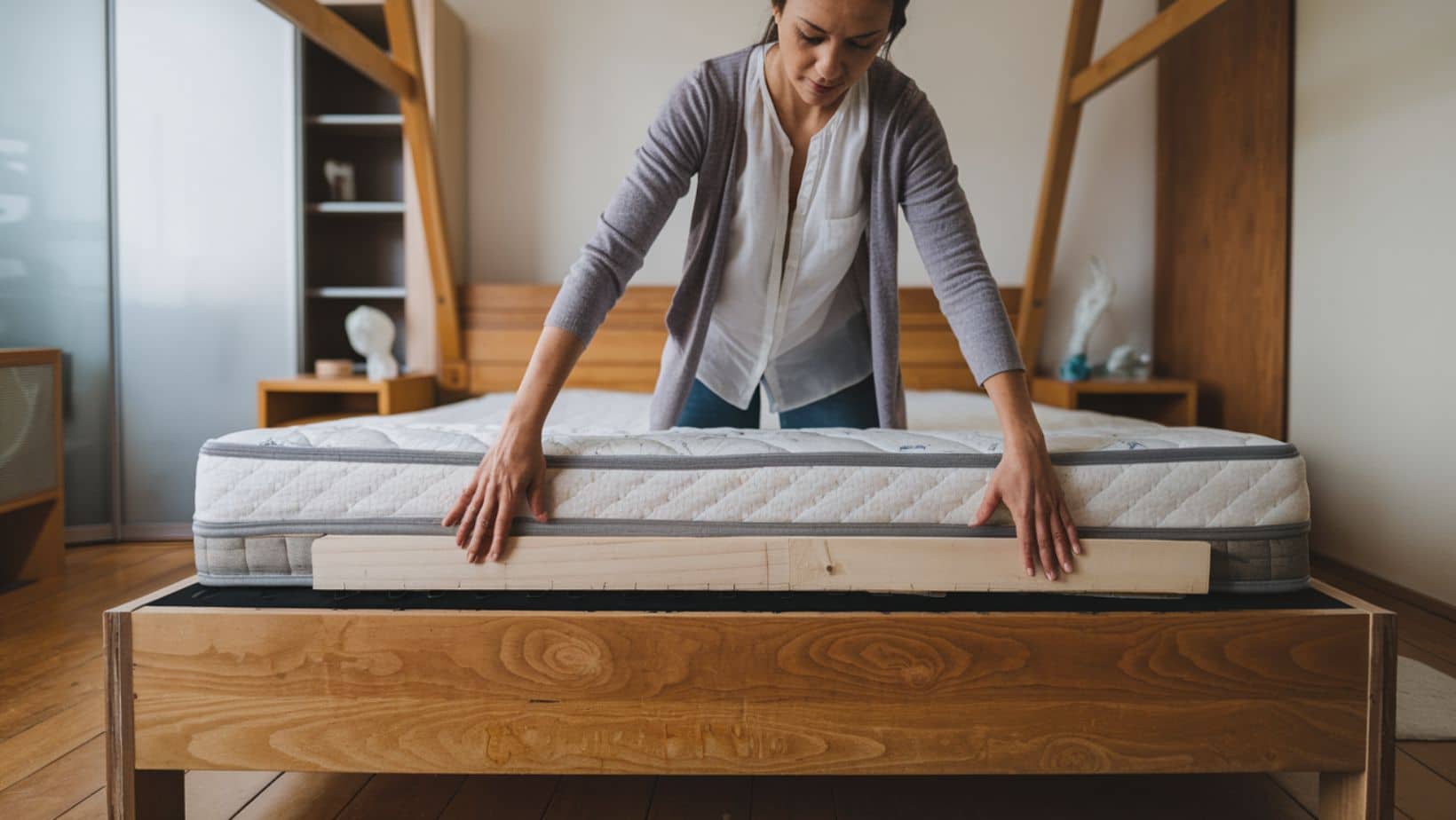As a bedroom comfort enthusiast, I’m always exploring innovative ways to enhance sleep quality and support proper spinal alignment. One intriguing method that’s gained traction among sleep hackers is placing a wooden board under the mattress. This simple yet effective technique can potentially transform a too-soft mattress into a supportive sleep surface. Let’s dive into the world of DIY mattress firmness and discover how a humble piece of wood might revolutionize your sleep experience.
The Science Behind Placing a Wooden Board Under Your Mattress
The concept of adding a wooden board under your mattress isn’t just a quirky idea – it’s rooted in sleep ergonomics and spinal health principles.
Why Wood?
Wood offers a firm, stable surface that can help distribute body weight more evenly across the mattress. This can be particularly beneficial for those who find their current mattress too soft or lacking in support.
Benefits of Using a Wooden Board Under Your Mattress
Incorporating a wooden board into your bed setup can offer several advantages:
1. Improved Spinal Alignment
A firmer sleep surface can help maintain proper spinal alignment throughout the night, potentially reducing back pain and stiffness.
2. Extended Mattress Life
By providing additional support, a wooden board can help prevent premature sagging and extend the lifespan of your mattress.
3. Customizable Firmness
This method allows you to adjust the firmness of your bed without investing in a new mattress, offering a cost-effective solution for those seeking a firmer sleep surface.
4. Potential Relief from Back Pain
Some individuals with back pain report finding relief when sleeping on a firmer surface, which a wooden board can provide.
How to Place a Wooden Board Under Your Mattress
Ready to try this mattress-firming hack? Here’s a step-by-step guide:
- Choose a suitable board: Opt for a smooth, flat piece of plywood or MDF that’s slightly smaller than your mattress.
- Clean and prepare the board: Ensure the board is free from splinters and rough edges.
- Position the board: Place it directly on top of your box spring or bed slats, under the mattress.
- Add the mattress: Carefully place your mattress on top of the board.
- Test and adjust: Lie on the bed to assess the new firmness level. Adjust as needed by adding or removing padding.
Considerations When Using a Wooden Board Under Your Mattress
While this method can be effective, keep these points in mind:
- Start with a thinner board and gradually increase thickness if needed.
- Ensure the board doesn’t create pressure points or discomfort.
- Be aware that this modification might affect your mattress warranty.
- Consider using a breathable fabric between the board and mattress to prevent moisture buildup.
Alternatives to Using a Wooden Board
If you’re hesitant about using wood, consider these alternatives:
- Mattress toppers: A firm mattress topper can add support without modifying your bed setup.
- Adjustable bed base: These allow you to customize firmness and position for different parts of your body.
- Mattress helper: Commercial products designed to firm up specific areas of your mattress.
FAQ: Common Questions About Using a Wooden Board Under the Mattress
Will placing a board under my mattress void the warranty?
It might. Check your mattress warranty before making any modifications to your bed setup.
How thick should the wooden board be?
Start with a 1/2 inch to 3/4 inch thick board. You can always increase the thickness if you need more firmness.
Is this method suitable for all types of mattresses?
While it can work for many mattress types, it’s particularly effective for innerspring and hybrid mattresses. Memory foam mattresses might not respond as well to this method.
In conclusion, placing a wooden board under your mattress can be an effective way to increase firmness and support. However, it’s important to approach this method carefully, considering your individual needs and comfort preferences. If you’re dealing with persistent sleep issues or back pain, it’s always best to consult with a healthcare professional or sleep specialist before making significant changes to your sleep surface. Sweet dreams and happy experimenting!

